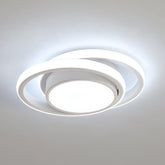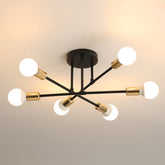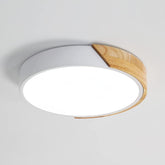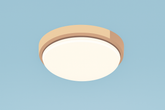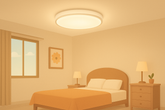Comparison of Light Sources: Working Principles and Characteristics of Incandescent, Fluorescent, and LED Lamps
1.1 Incandescent Lamp: The Classic Symbol of Traditional Lighting
The incandescent lamp is a milestone in the history of lighting. Invented by Thomas Edison over 130 years ago, it remains an iconic symbol of warm, natural illumination.
Working Principle:
An incandescent lamp produces light by heating a tungsten filament until it glows at around 2500–3000 K. As electric current passes through the filament, most of the energy (about 95%) is converted into heat, with only about 5% emitted as visible light.
Technical Characteristics:
Continuous light spectrum similar to natural sunlight, with a color temperature between 2700 K and 3000 K, providing a warm yellowish tone. Its Color Rendering Index (CRI) is close to 100, offering excellent color accuracy. Instant start-up with full brightness as soon as it’s switched on.
Visual Appearance:
Because of their small light source and numerous bulb shapes, incandescent lamps are highly versatile and decorative. Modern wall sconces using incandescent bulbs often feature vintage designs, making them ideal for industrial or retro-style interiors.
1.2 Fluorescent Lamp: The Energy-Efficient Transitional Choice
As the second generation of lighting technology, fluorescent lamps became popular in the mid-20th century as a more efficient alternative to incandescent lighting.
Working Principle:
A fluorescent lamp emits light through gas discharge. Inside the tube, a mixture of low-pressure mercury vapor and inert gas produces ultraviolet radiation when electricity passes through it. The UV light excites the phosphor coating on the inner walls, creating visible light.
Technical Characteristics:
Discontinuous light spectrum determined by the type of phosphor used. Adjustable color temperatures are available, typically 2700 K (warm white), 4000 K (neutral white), and 6500 K (cool white). The CRI usually ranges from 70 to 80. It requires a short preheating time (3–5 seconds) to reach full brightness.
Visual Appearance:
Fluorescent wall lamps often have tubular or compact forms with a minimalist design, making them well-suited for modern and contemporary interiors.
1.3 LED Lamp: The Technological Pioneer of Modern Lighting
The LED (Light Emitting Diode) represents the third generation of lighting technology and defines the future of modern illumination.
Working Principle:
LEDs work through the electroluminescent effect of a semiconductor PN junction. When electric current passes through the semiconductor, electrons and holes recombine, releasing energy in the form of photons. Different semiconductor materials produce different colors of light.
Technical Characteristics:
Concentrated light spectrum with excellent efficiency. Wide range of color temperatures from 2200 K (warm amber) to over 6500 K (cool daylight). Standard LEDs have a CRI of 80–85, while high-quality models exceed 90. Instant start with a response time under one microsecond.
Visual Appearance:
LED wall sconces allow for versatile and creative designs — ultra-thin, geometric, or organic shapes. They blend aesthetics with efficiency, perfectly complementing modern interior spaces.
